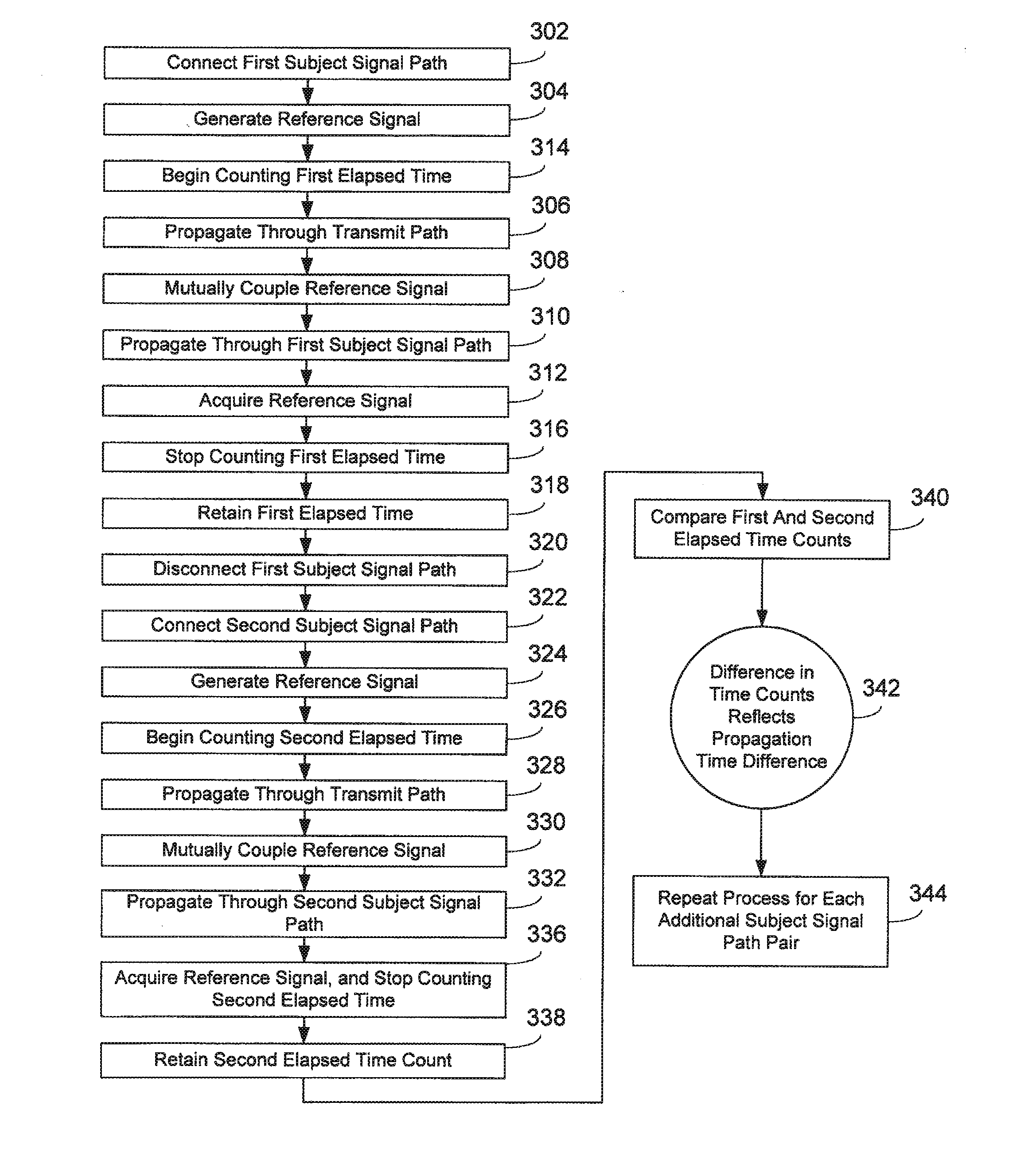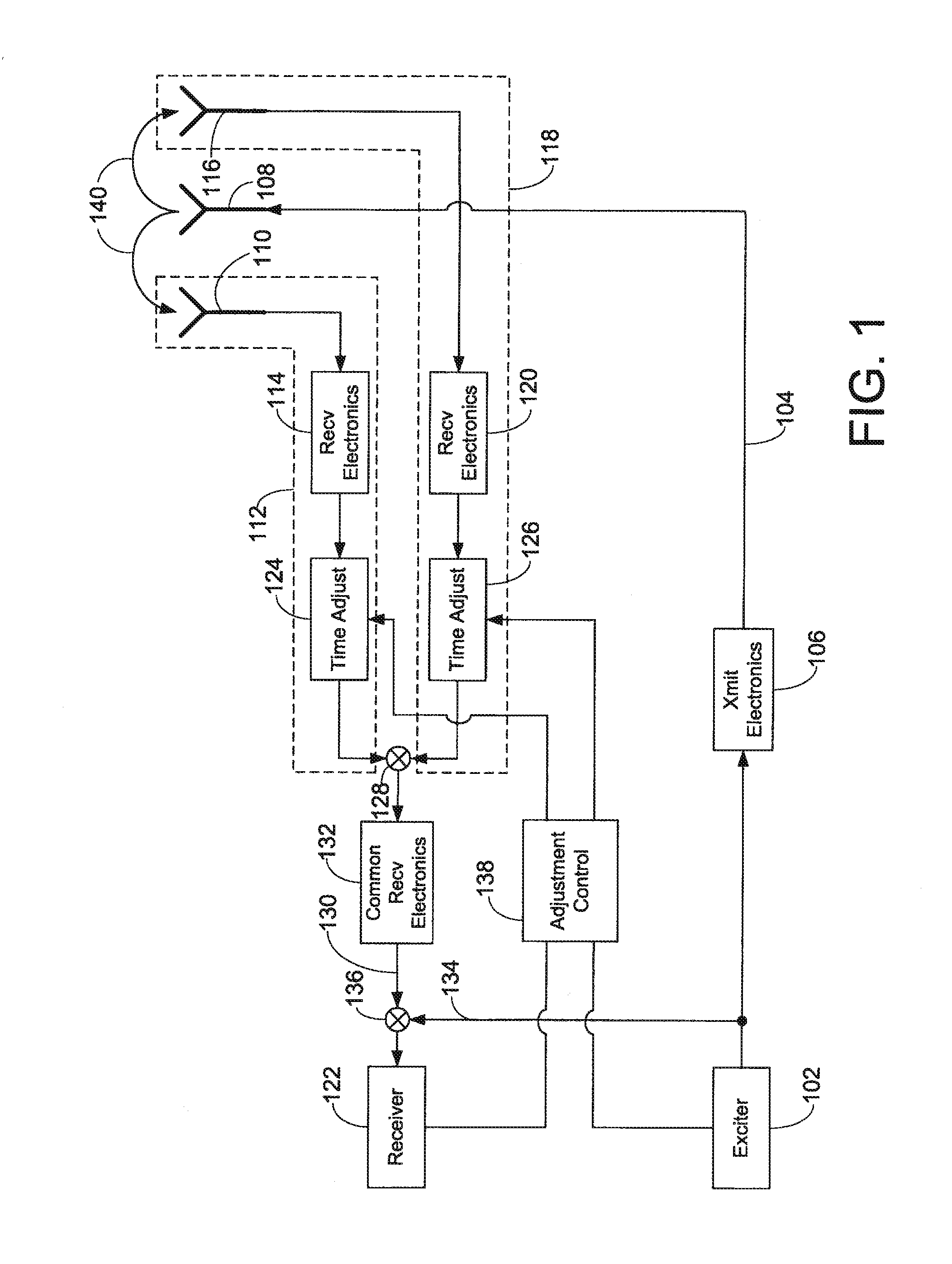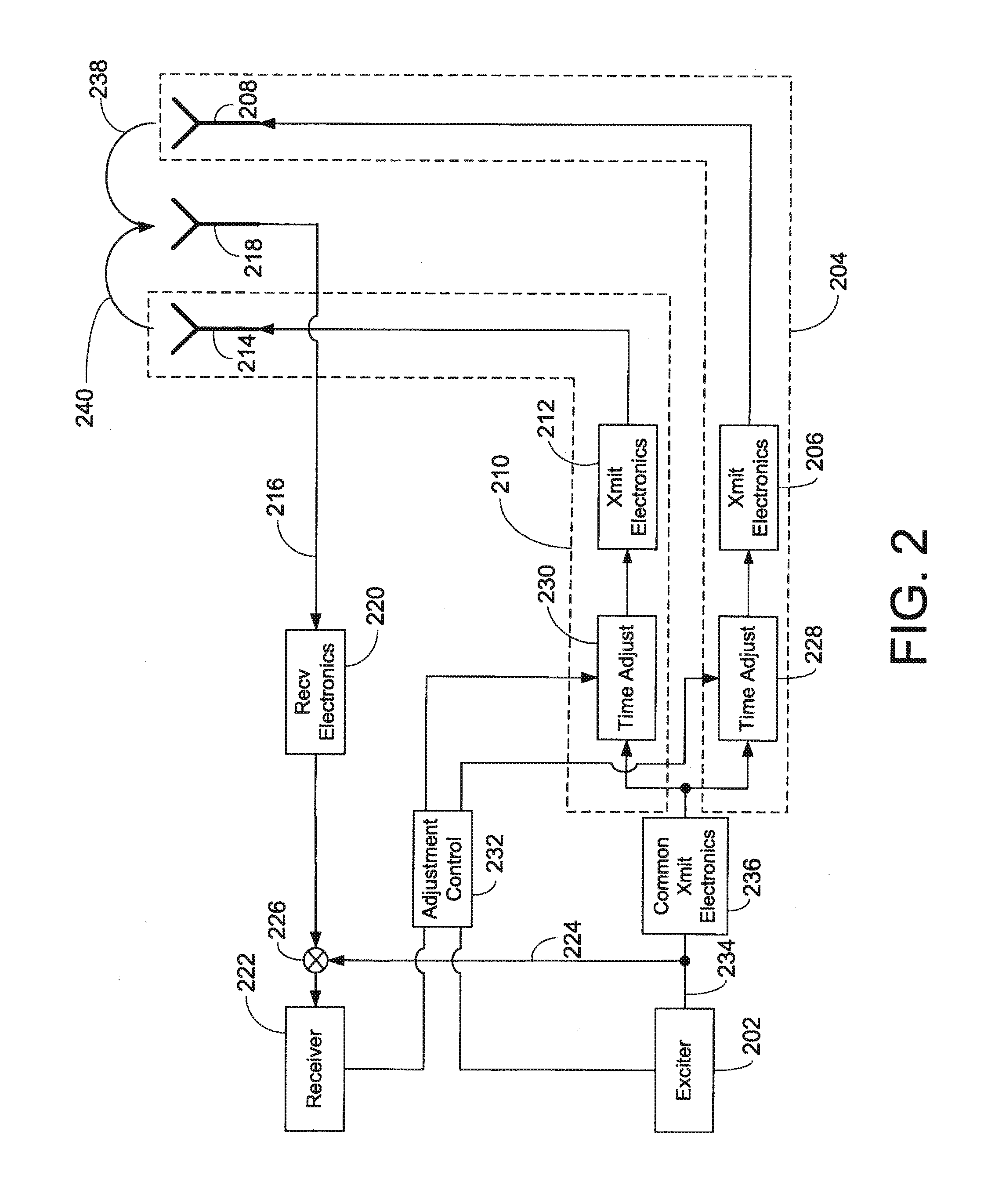Method and system for propagation time measurement and calibration using mutual coupling in a radio frequency transmit/receive system
a radio frequency transmit/receive system and propagation time measurement technology, applied in the direction of transmission monitoring, instruments, electrical equipment, etc., can solve the problems of uncalibrated propagation time mismatches in other portions of signal paths, additional circuitry required for propagation time measurement and calibration using these approaches, etc., to achieve the effect of improving instantaneous bandwidth performan
- Summary
- Abstract
- Description
- Claims
- Application Information
AI Technical Summary
Benefits of technology
Problems solved by technology
Method used
Image
Examples
Embodiment Construction
[0028]Embodiments in accord with the present invention are directed to a method and system for a radio frequency transmit / receive system that employs a selected reference signal and takes advantage of the mutual coupling property of multiple antenna elements to determine aspects of propagation time of a signal through multiple parallel signal paths, here called “subject signal paths,” that are also traversed by an operational signal between its generation and its reception during normal operation of the system. The generation of the reference signal and the acquisition of either the reference signal or signals derived from mixing instances of the reference signal are performed by the same exciter and receiver as are used for normal operational, permitting the aspects of signal path propagation time to be determined without the need for dedicated external measurement equipment.
[0029]Embodiments in accord with the present invention display reciprocity, that is, the methods of measurem...
PUM
 Login to View More
Login to View More Abstract
Description
Claims
Application Information
 Login to View More
Login to View More - R&D
- Intellectual Property
- Life Sciences
- Materials
- Tech Scout
- Unparalleled Data Quality
- Higher Quality Content
- 60% Fewer Hallucinations
Browse by: Latest US Patents, China's latest patents, Technical Efficacy Thesaurus, Application Domain, Technology Topic, Popular Technical Reports.
© 2025 PatSnap. All rights reserved.Legal|Privacy policy|Modern Slavery Act Transparency Statement|Sitemap|About US| Contact US: help@patsnap.com



